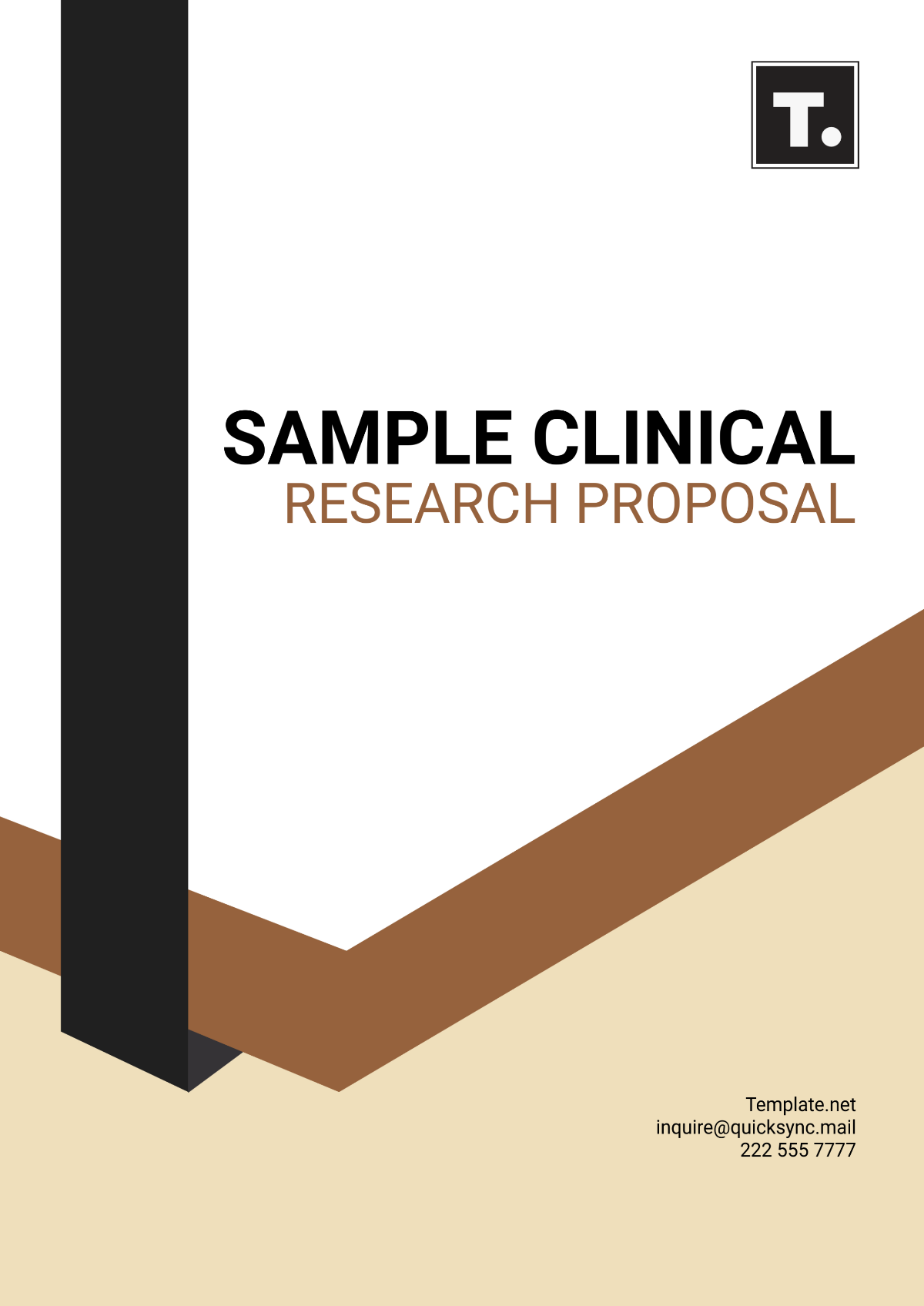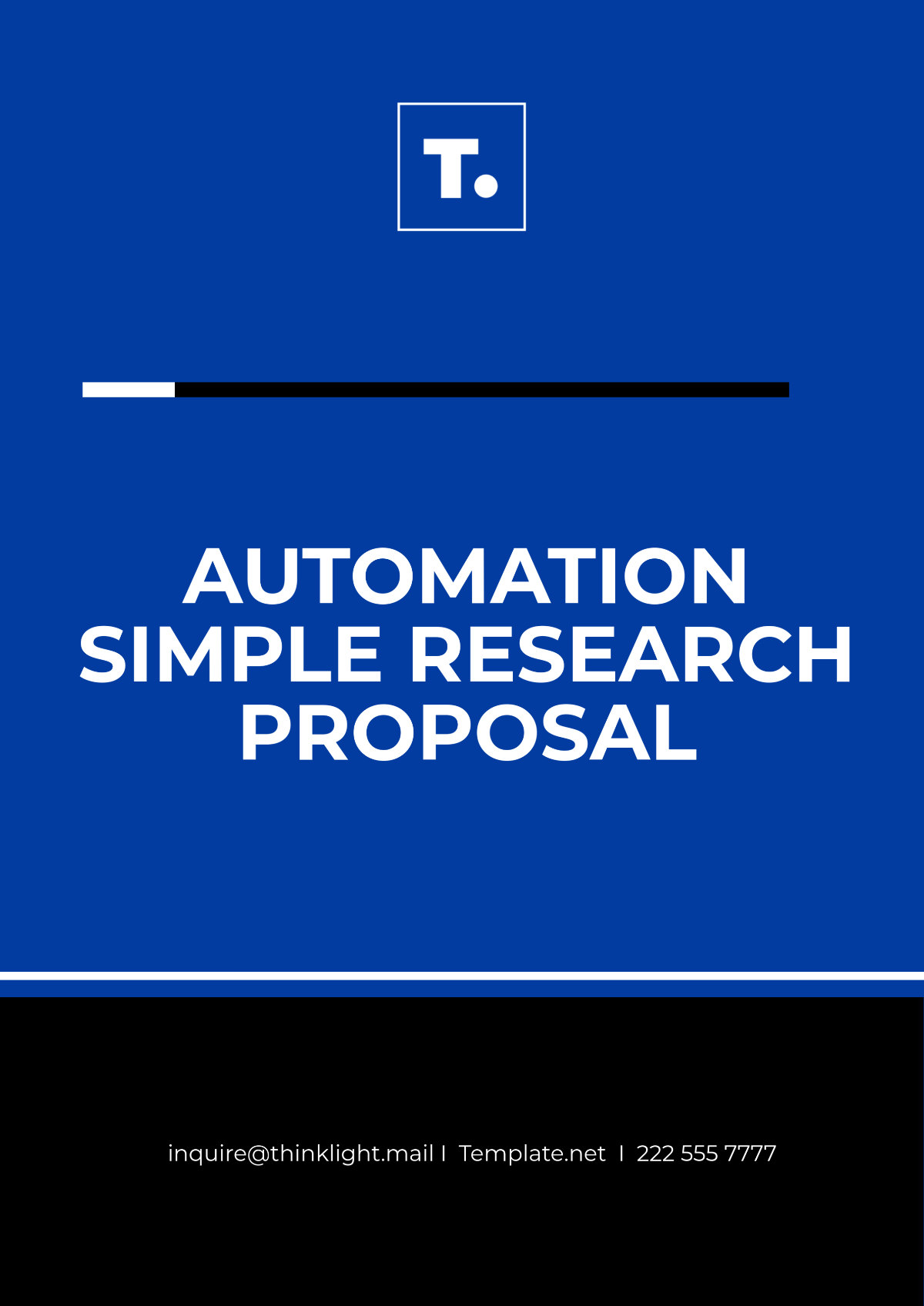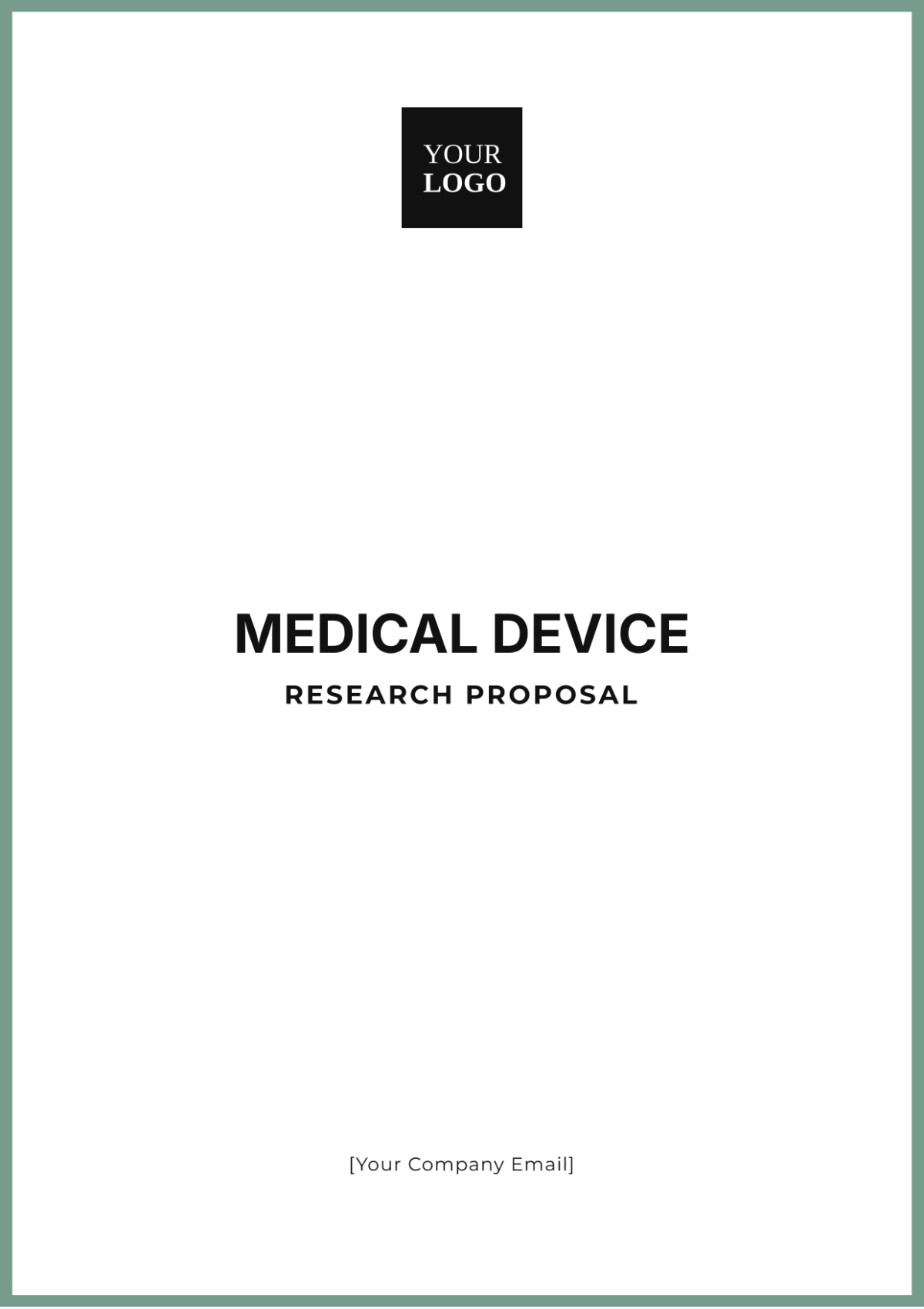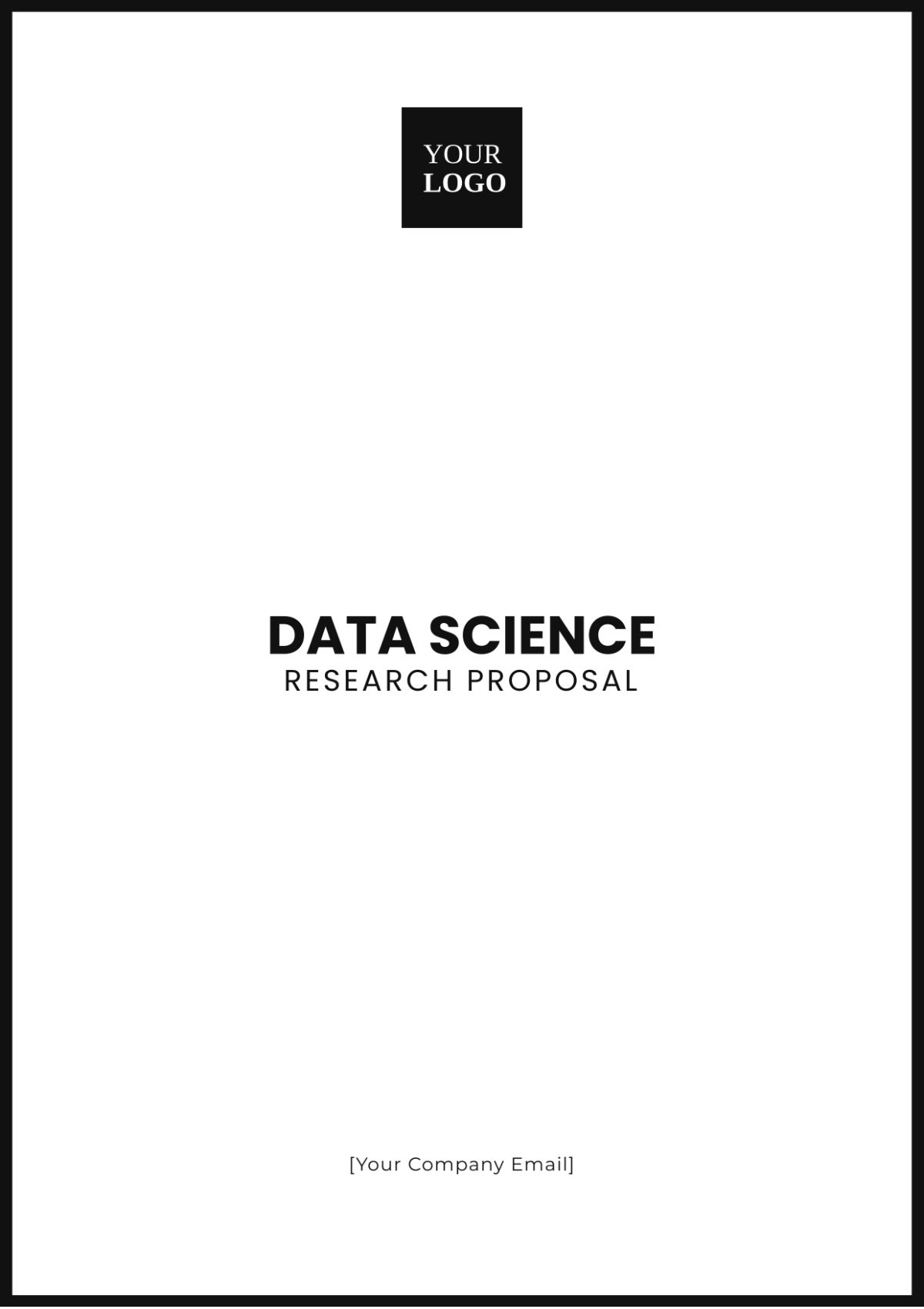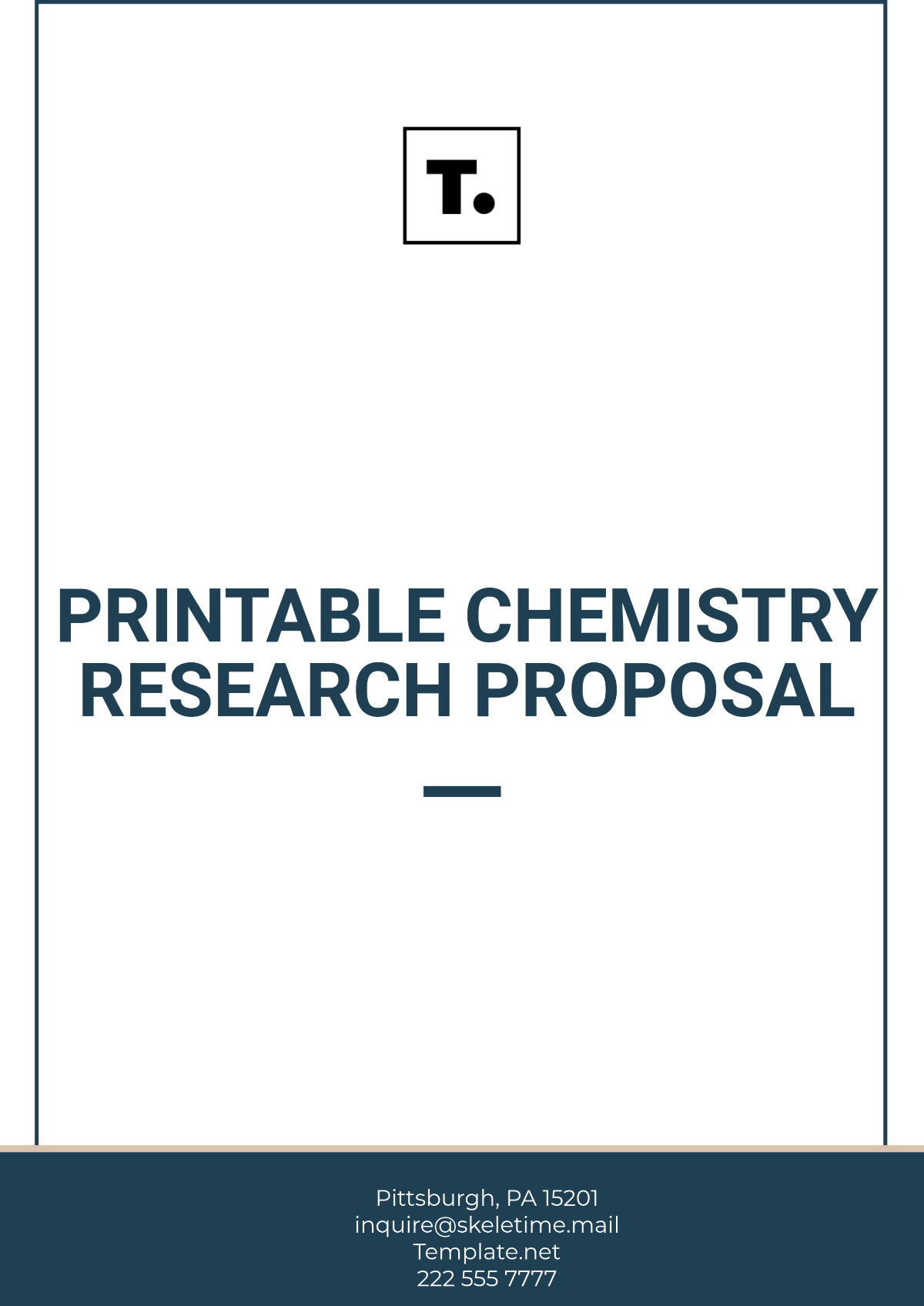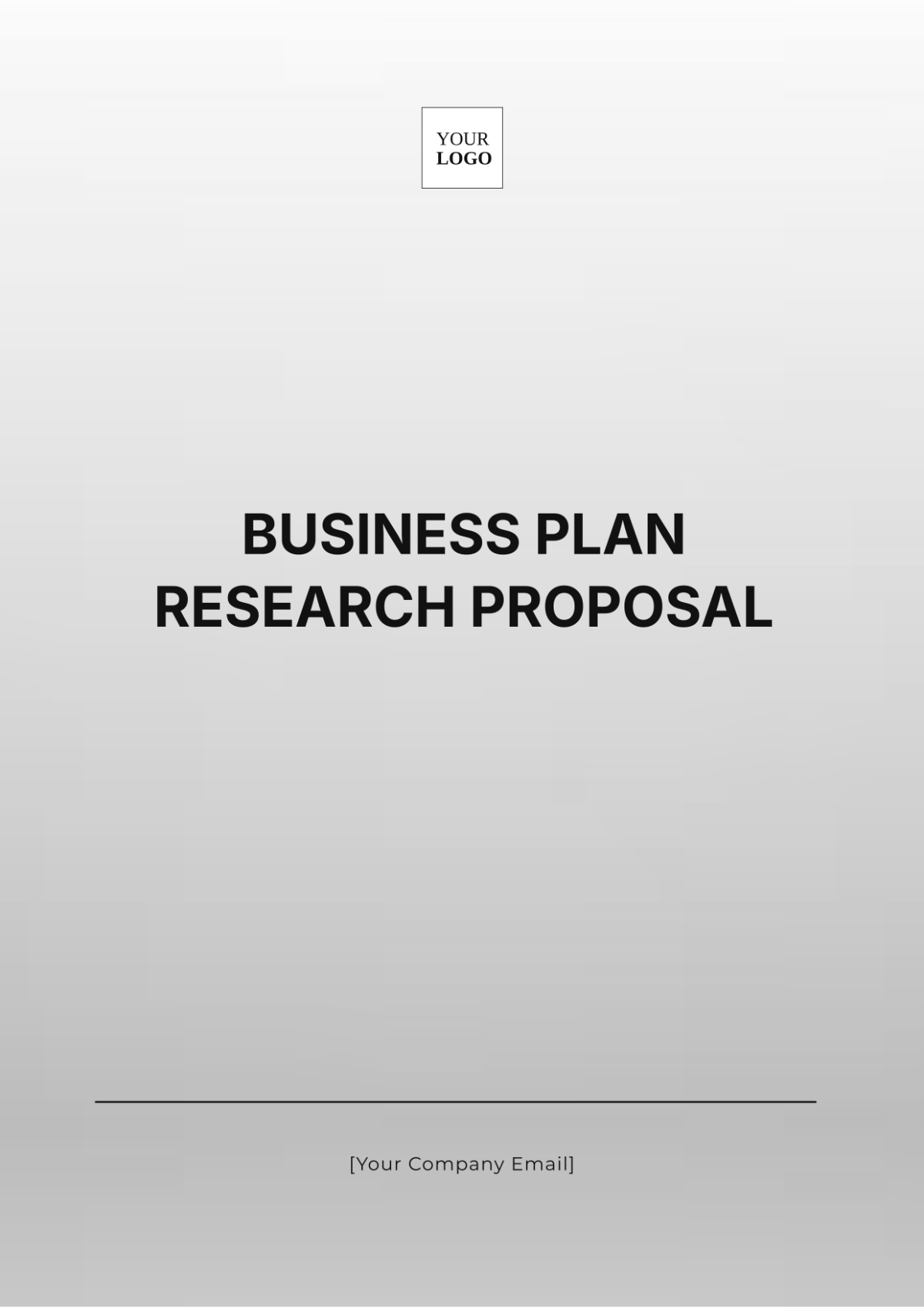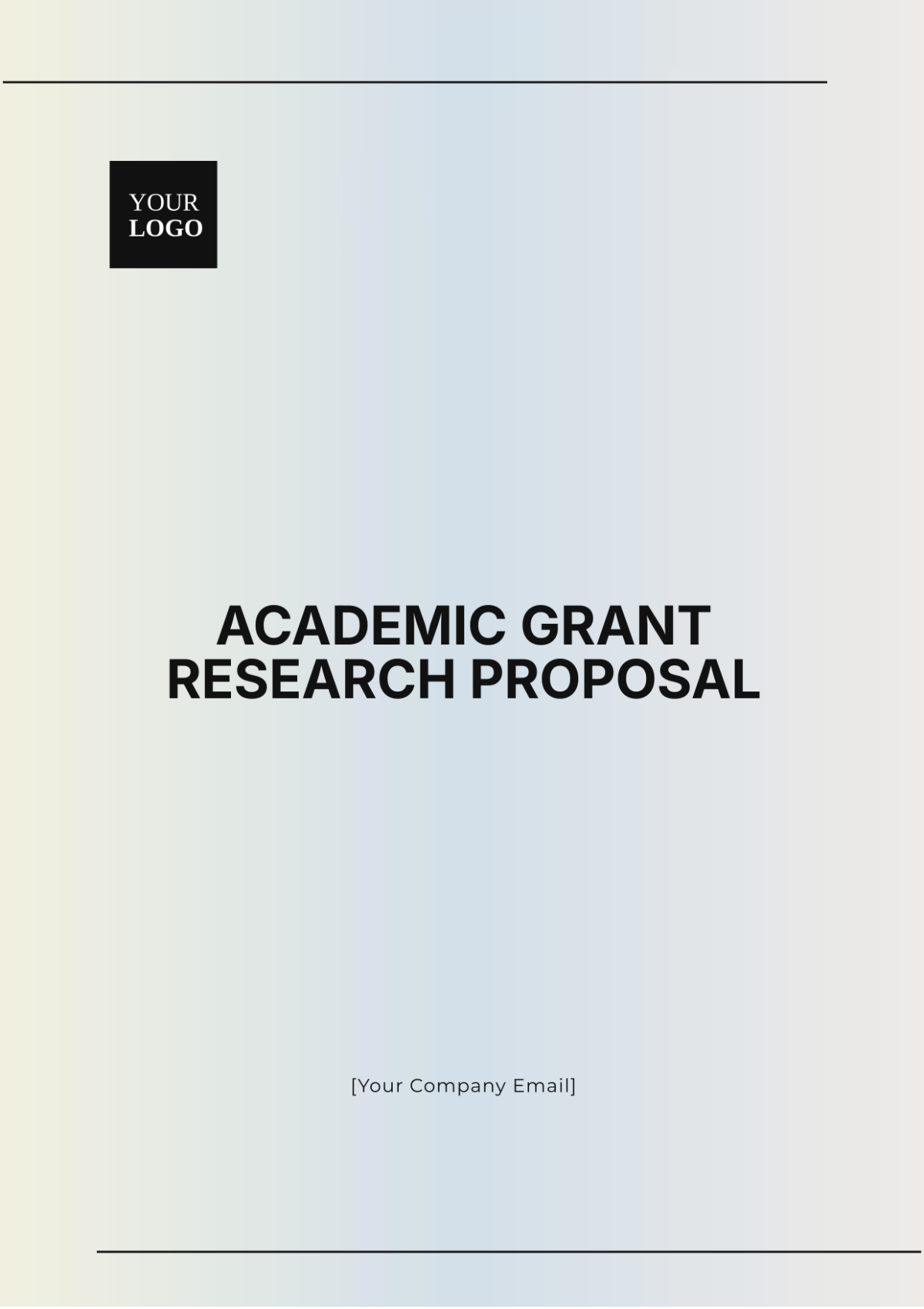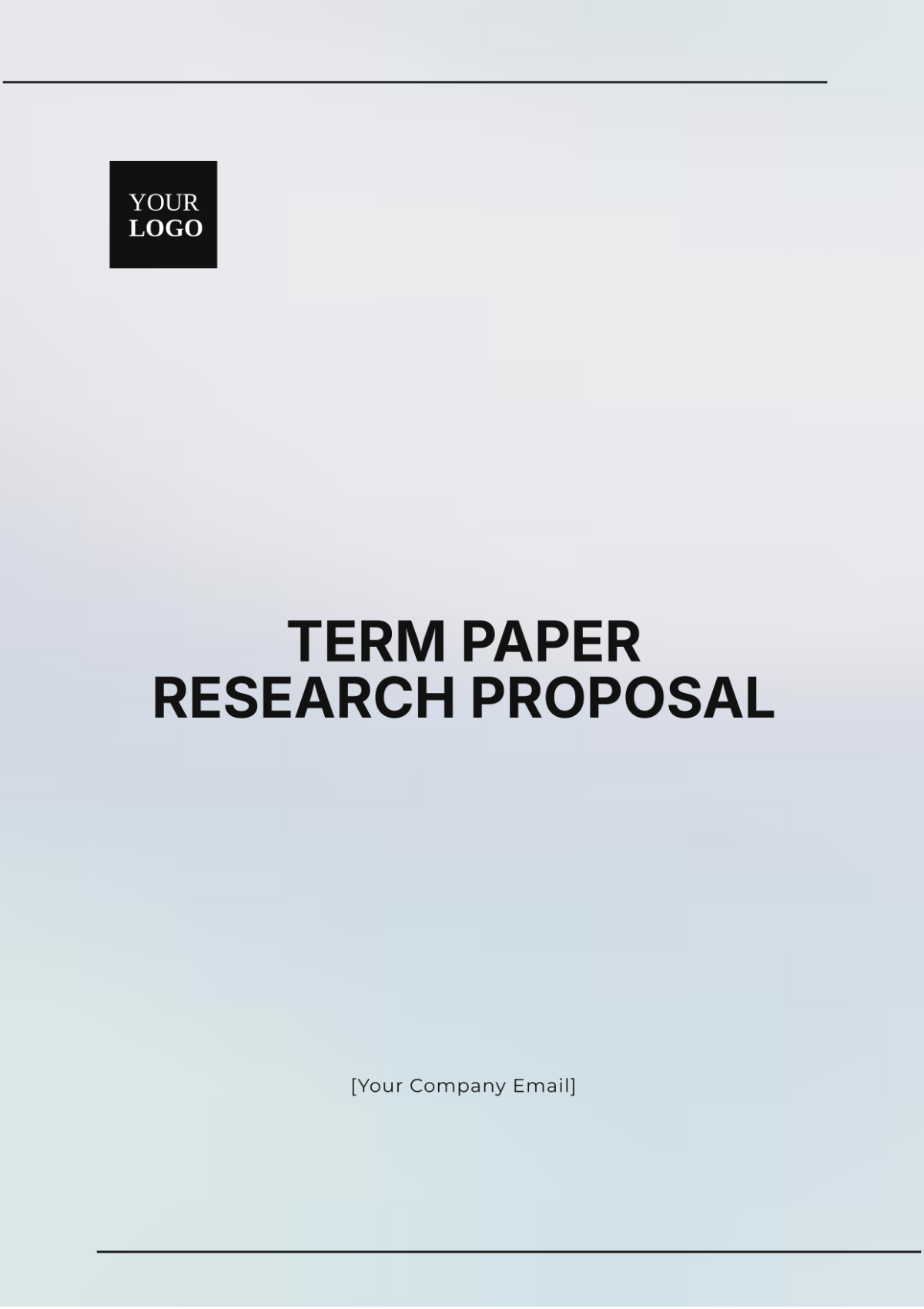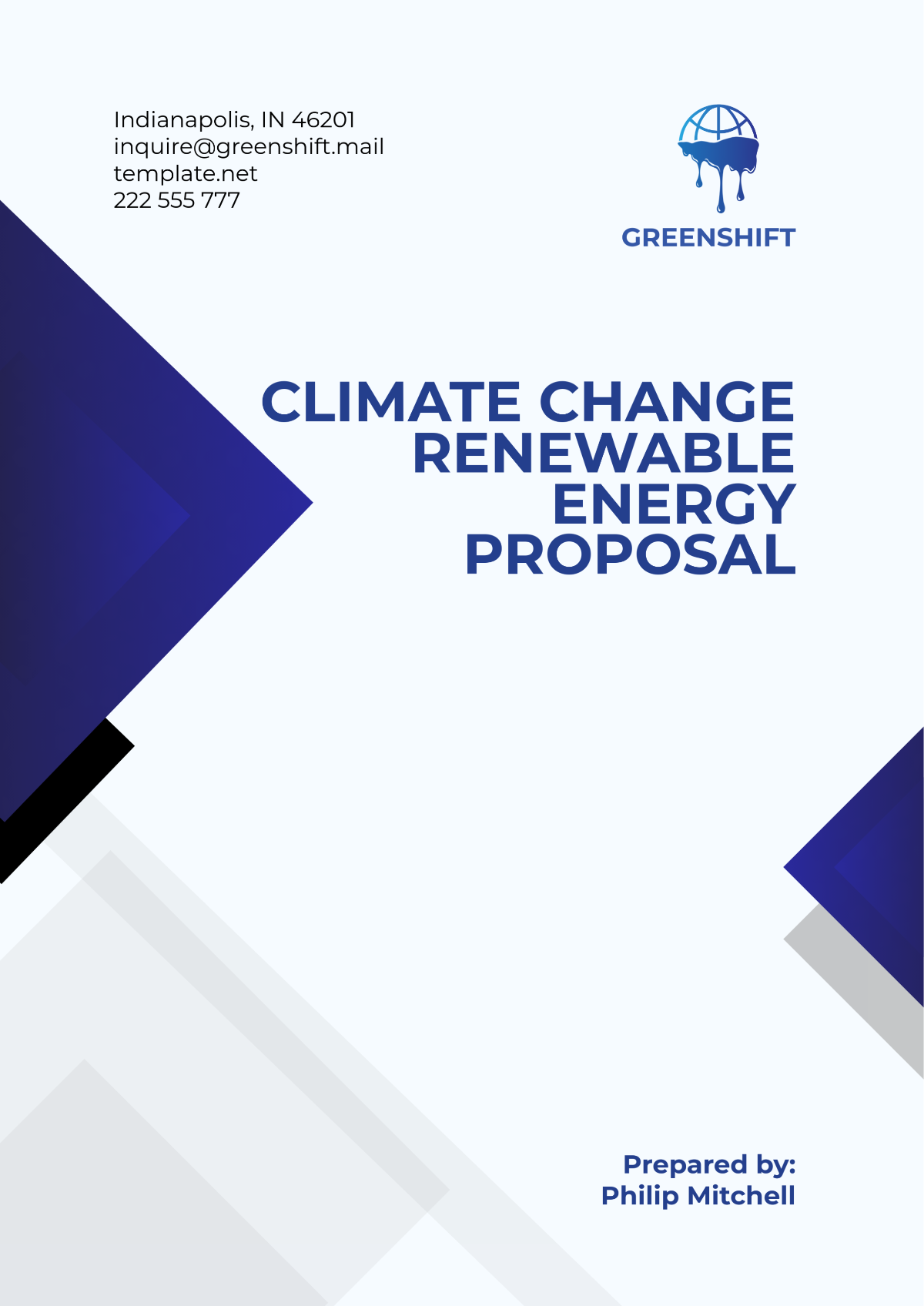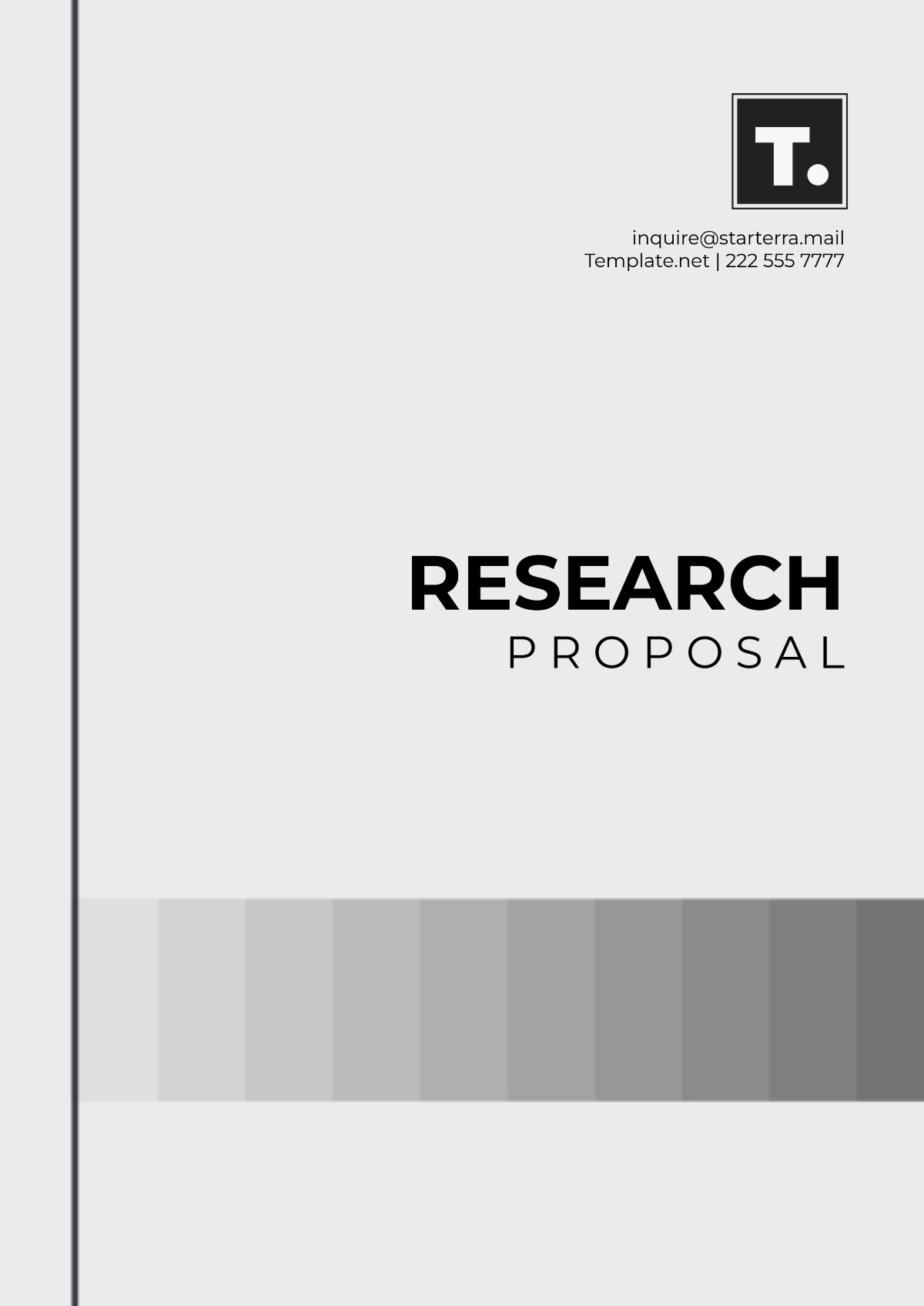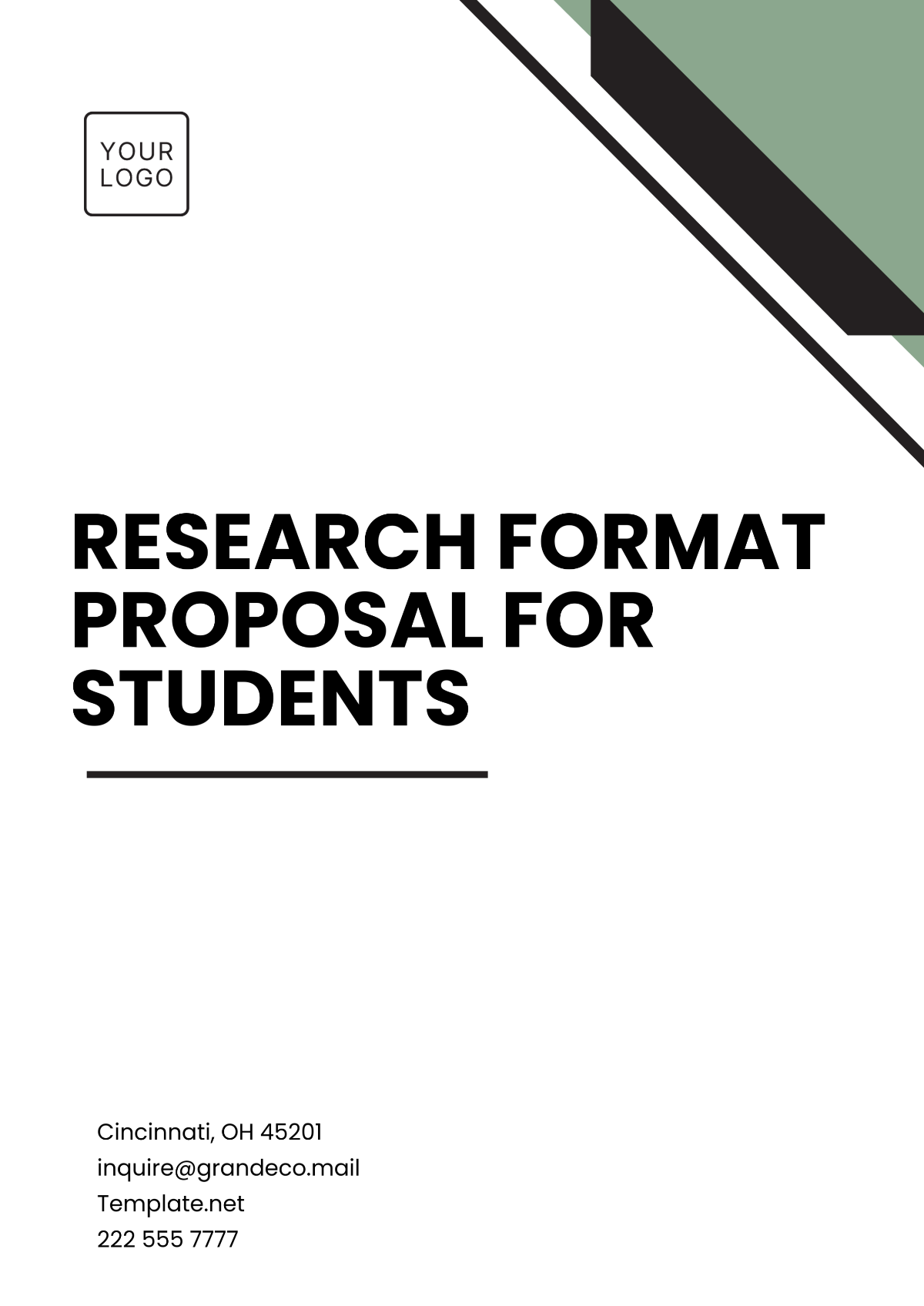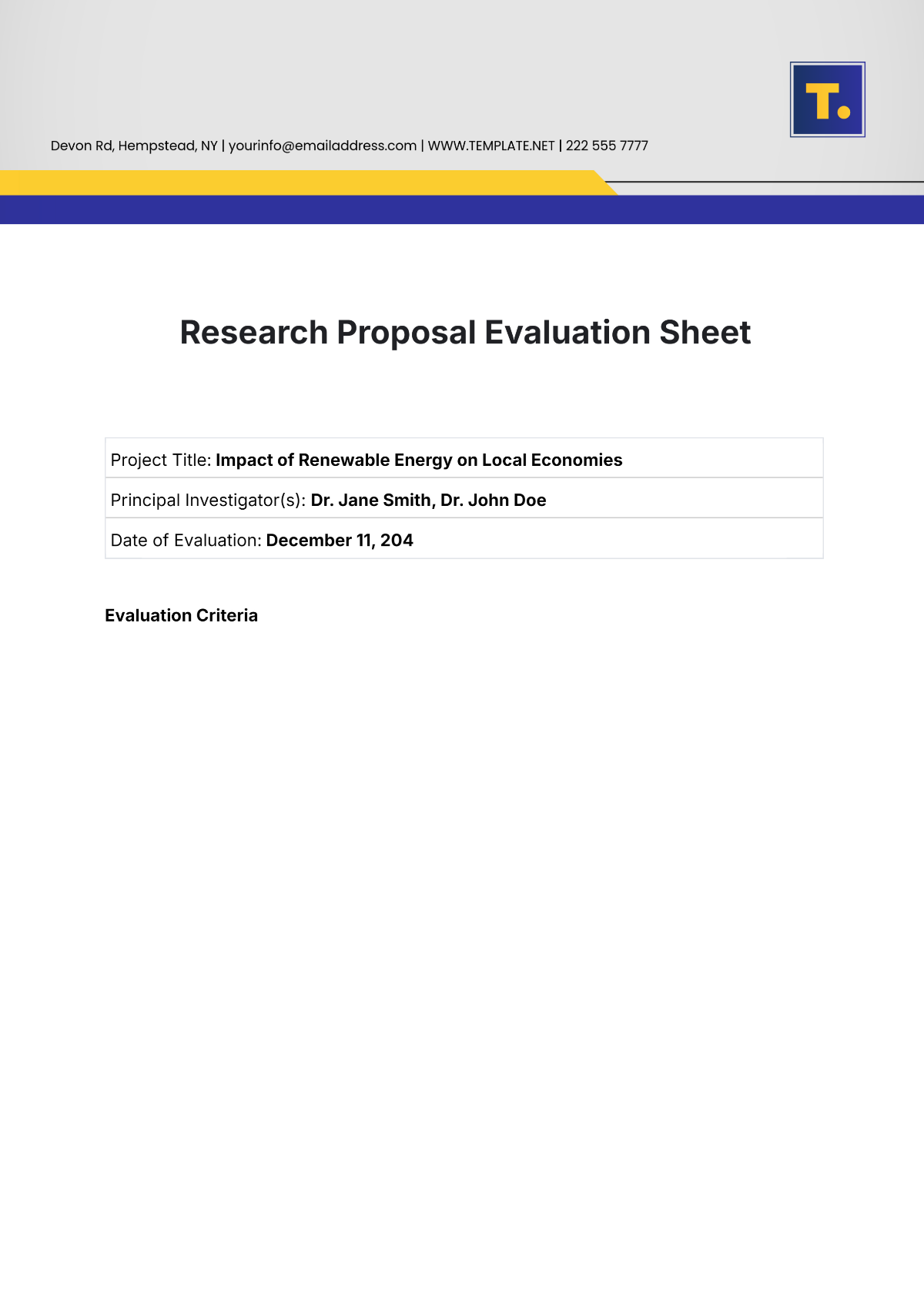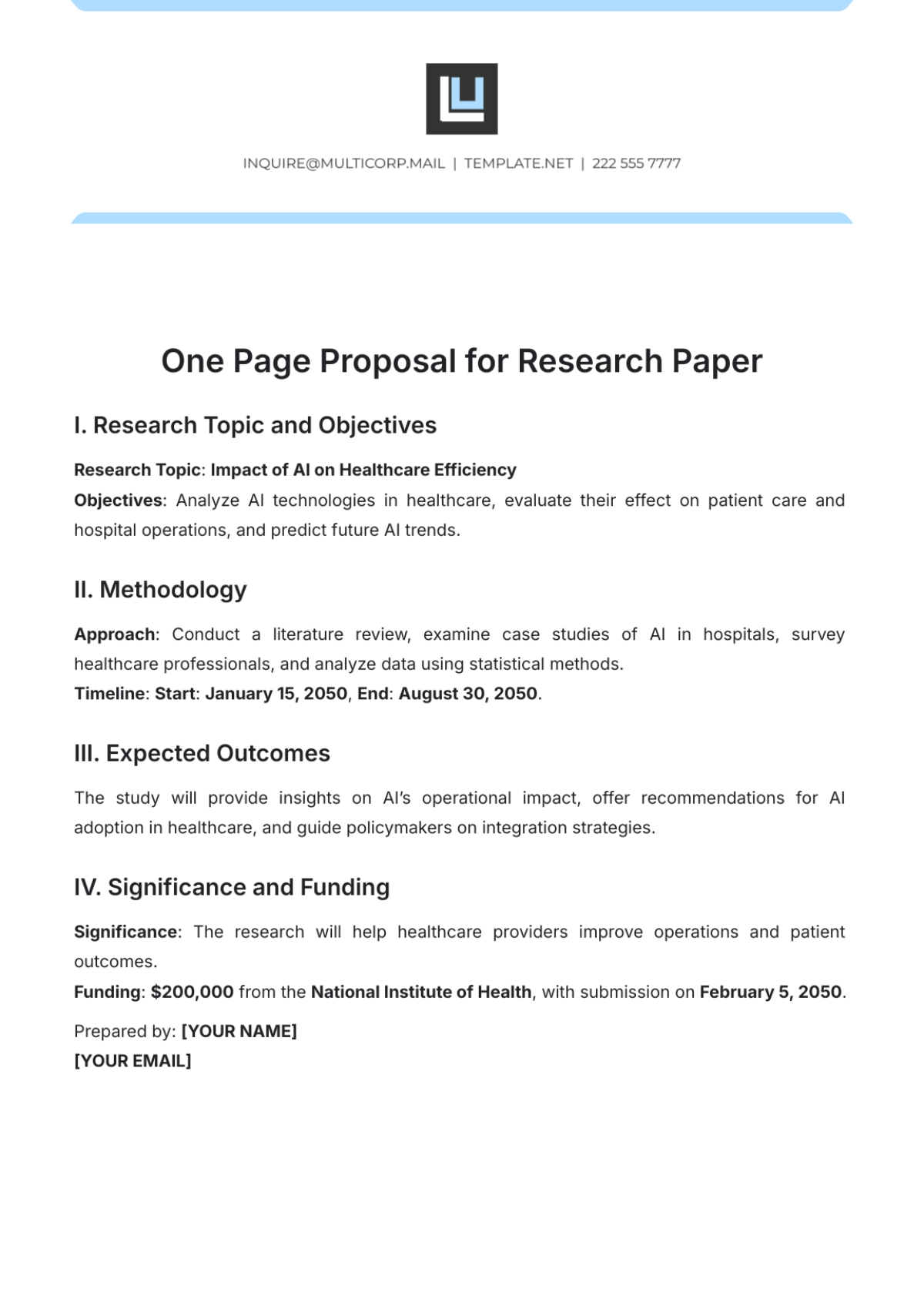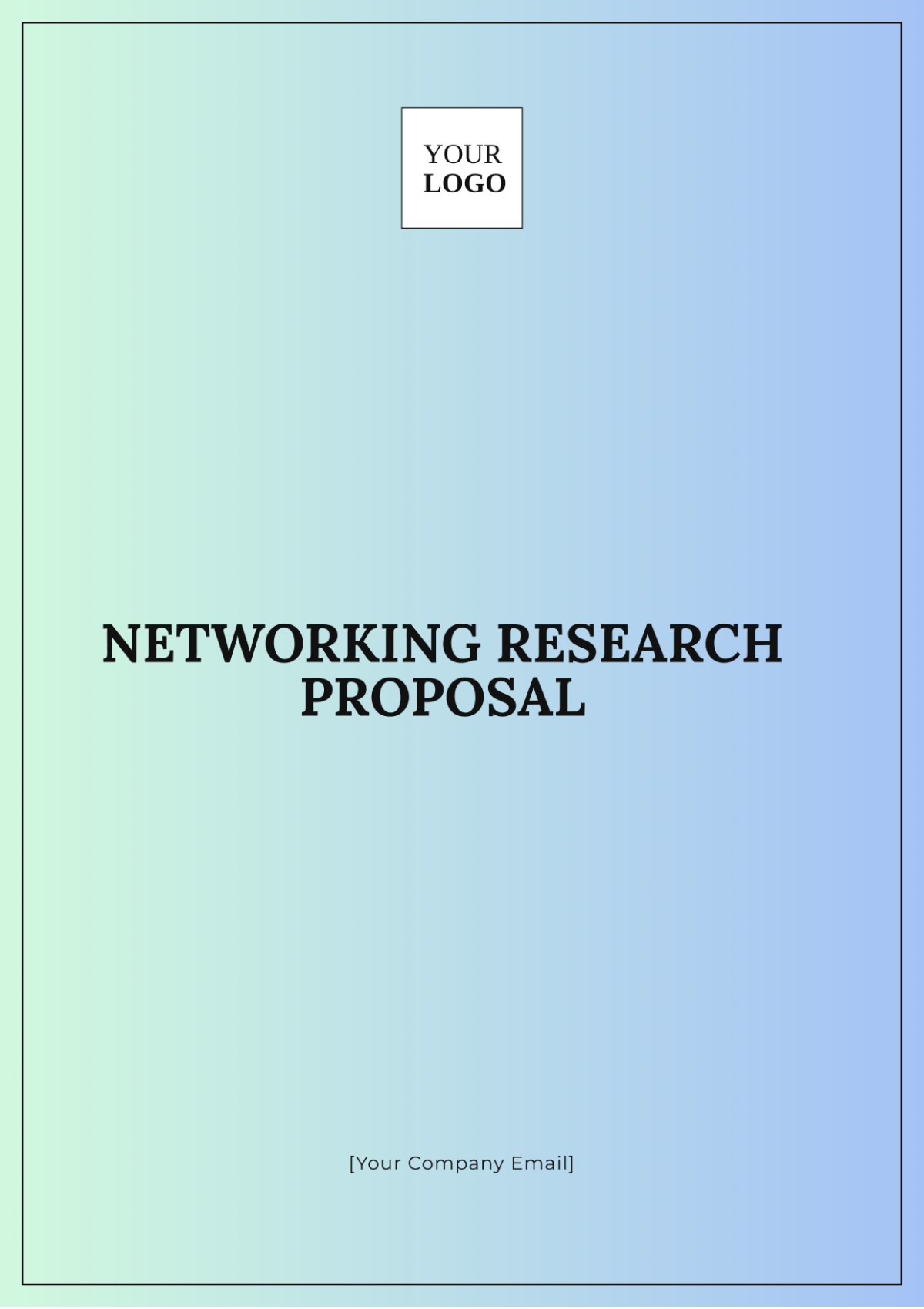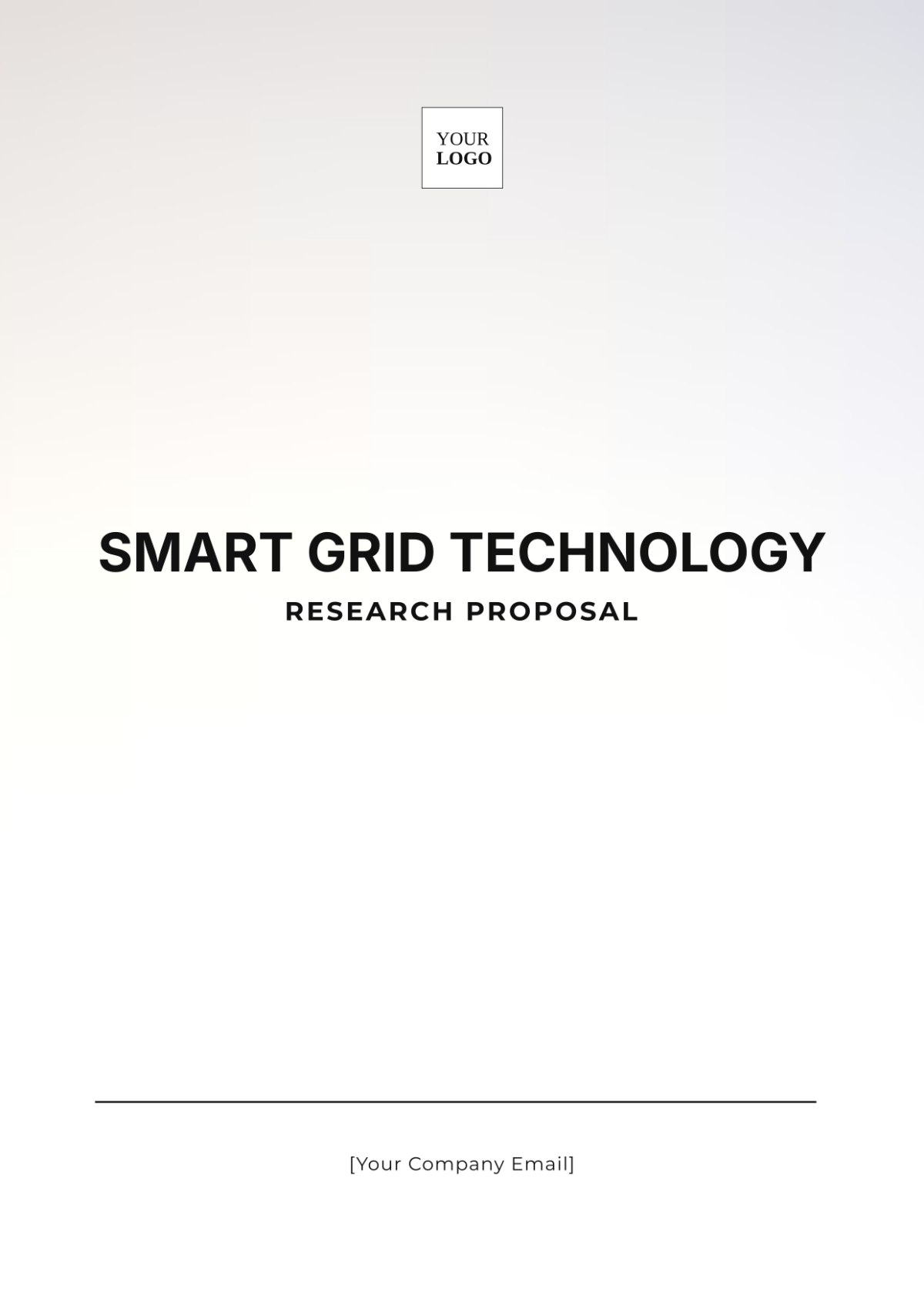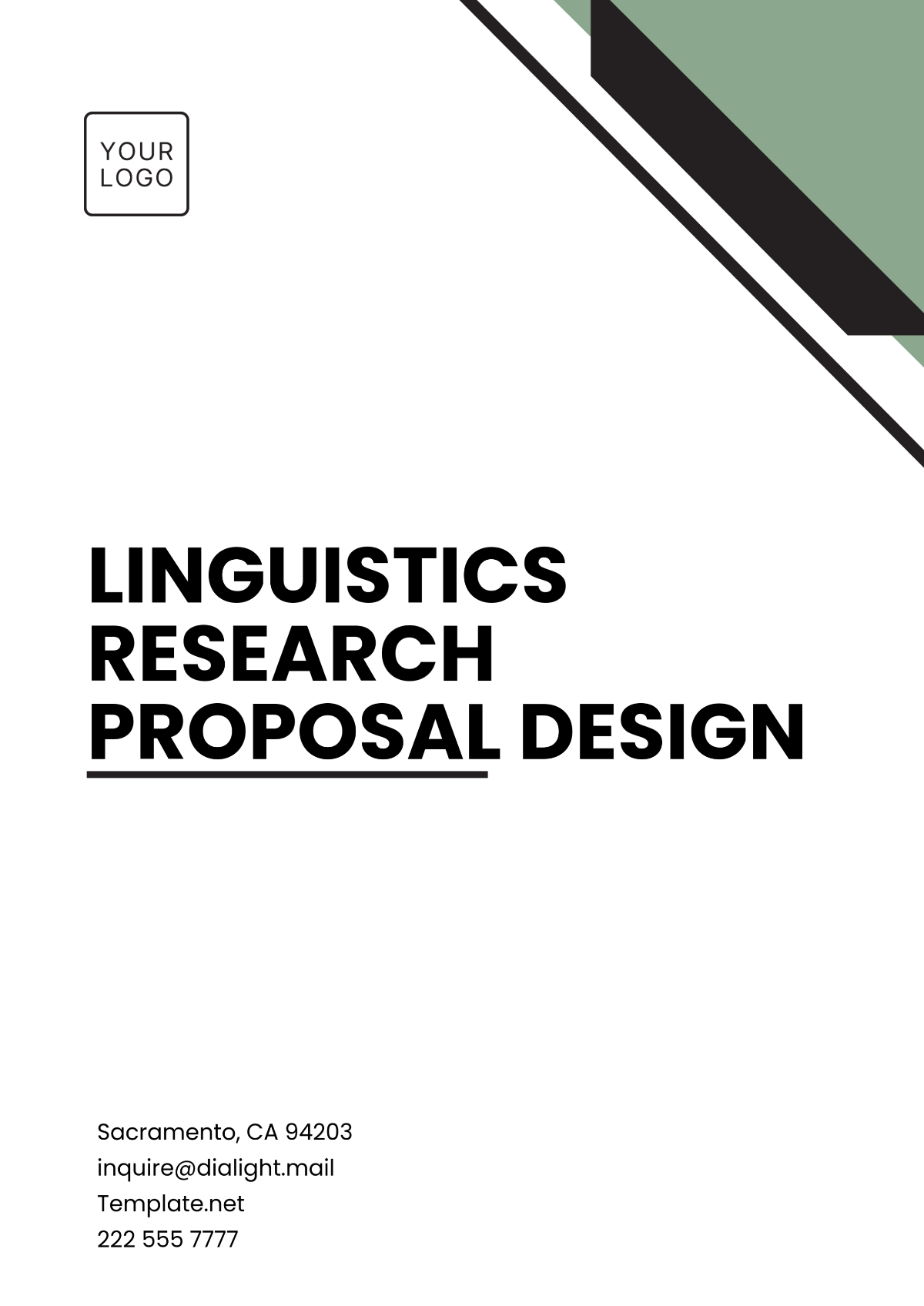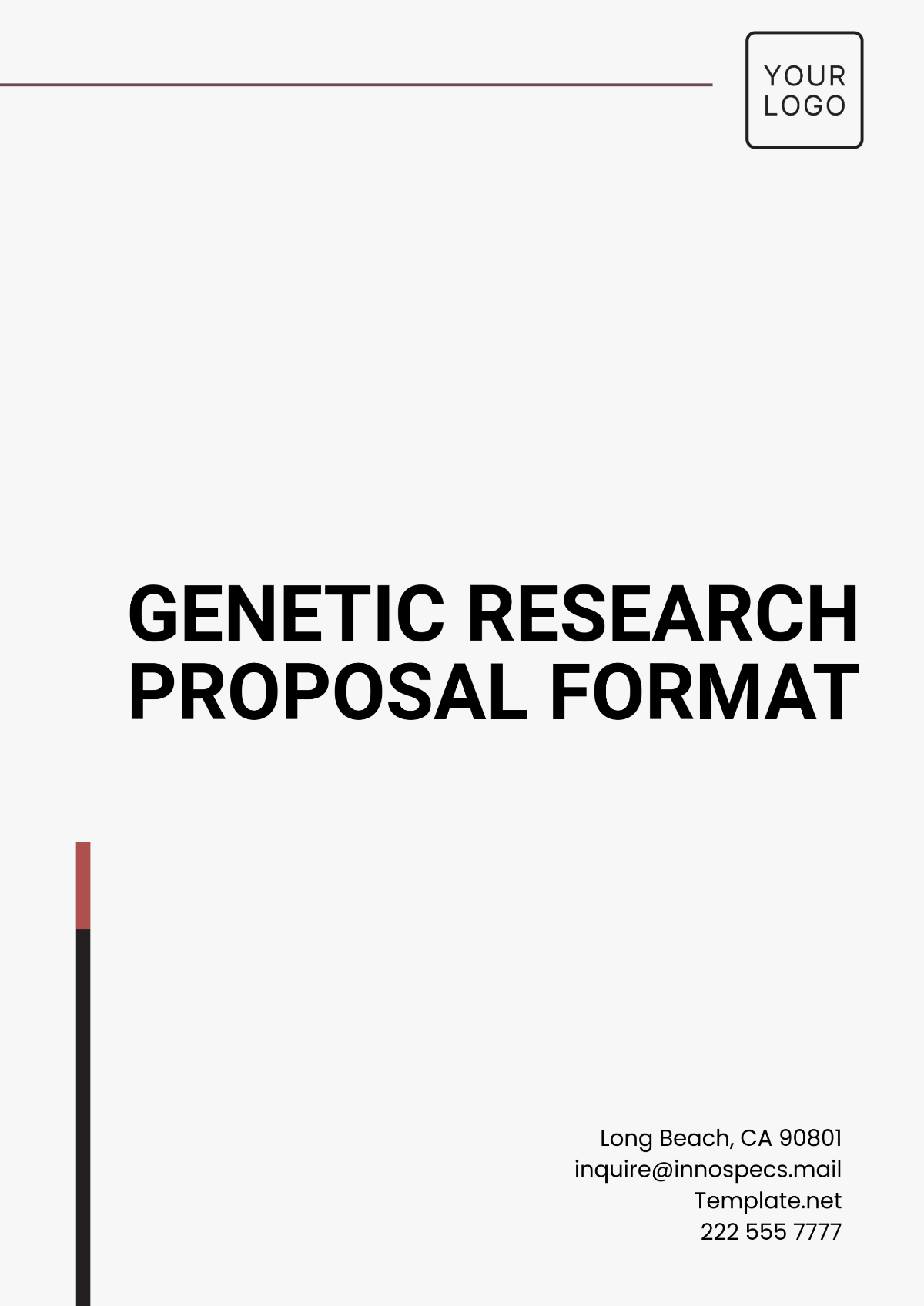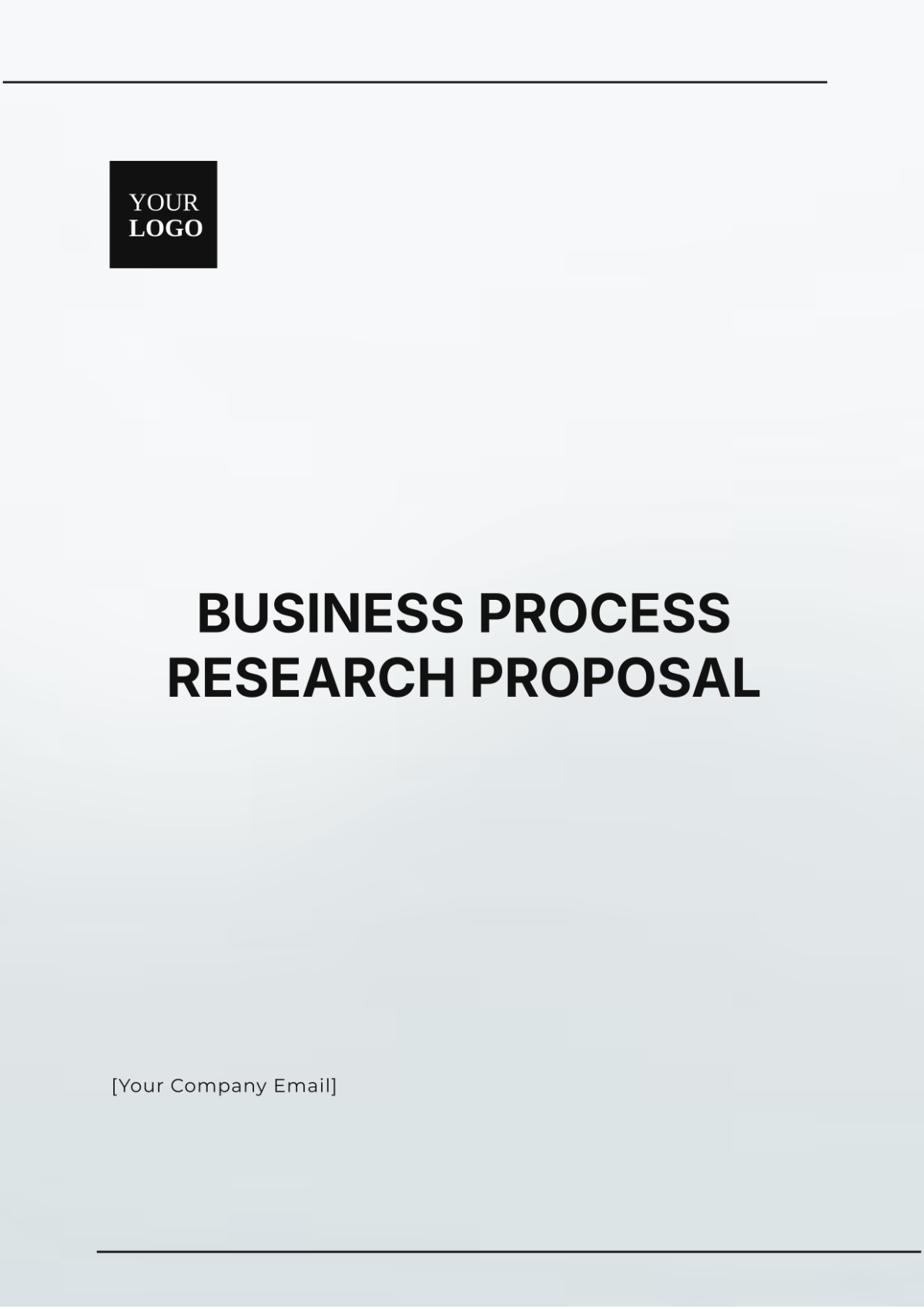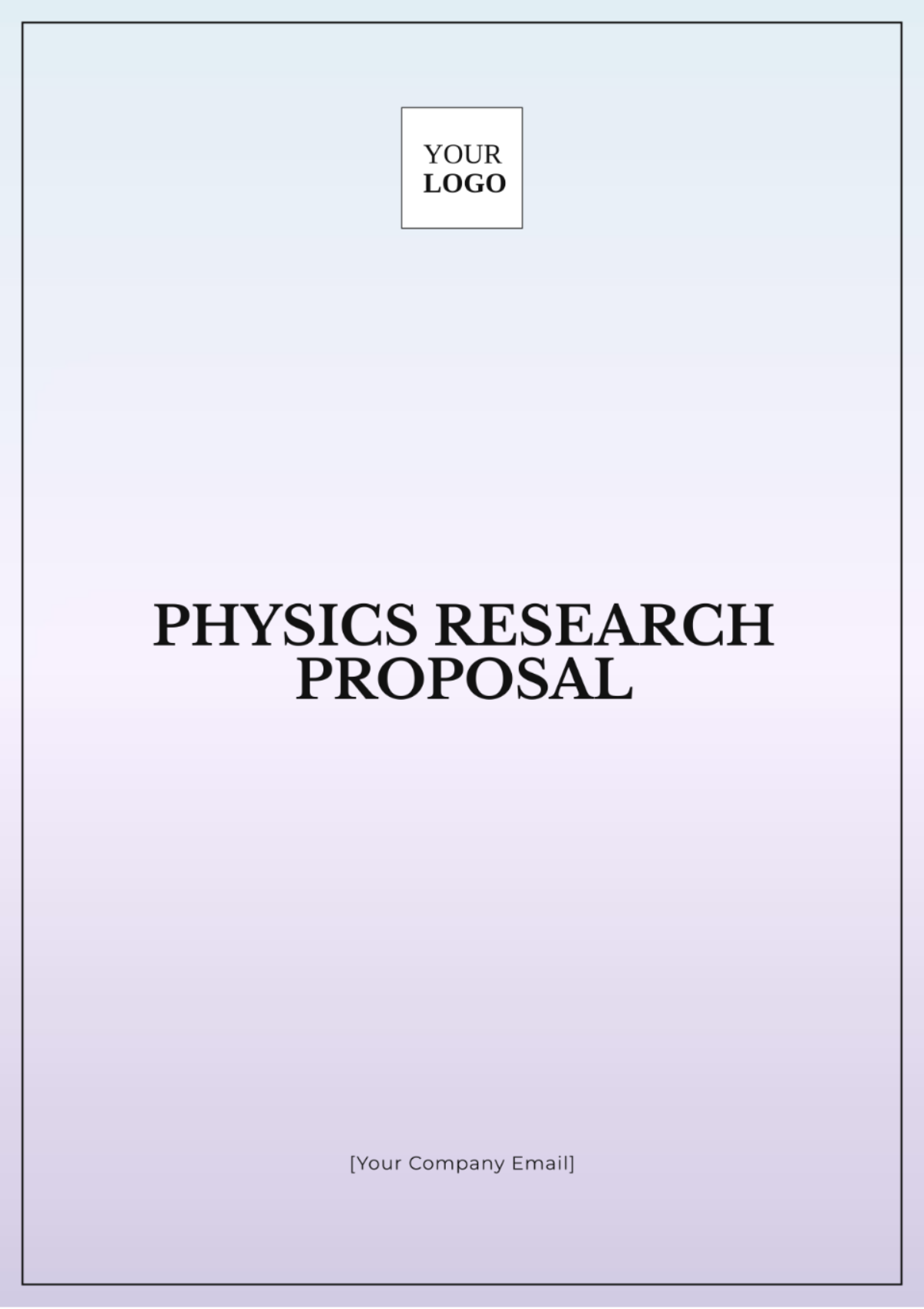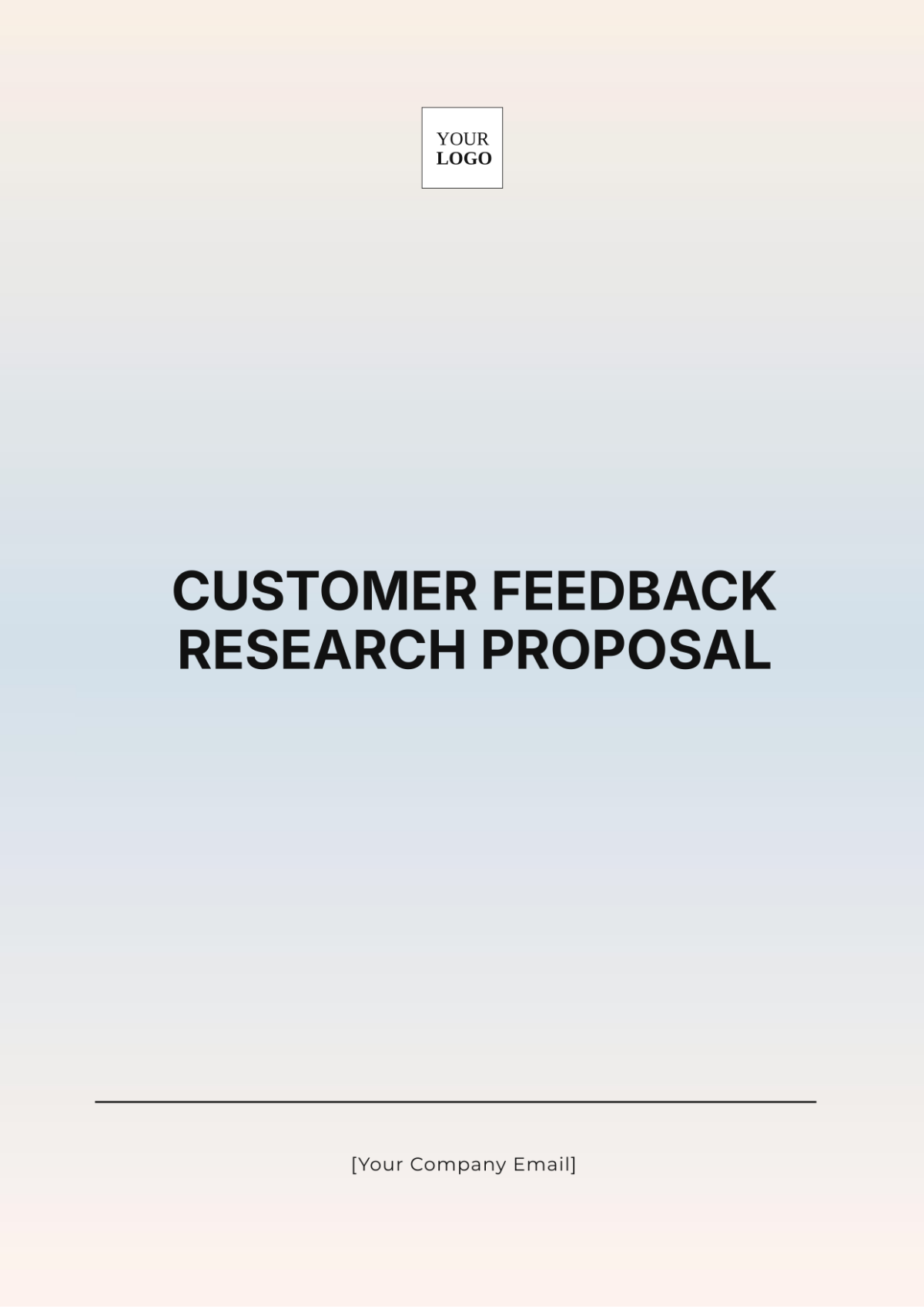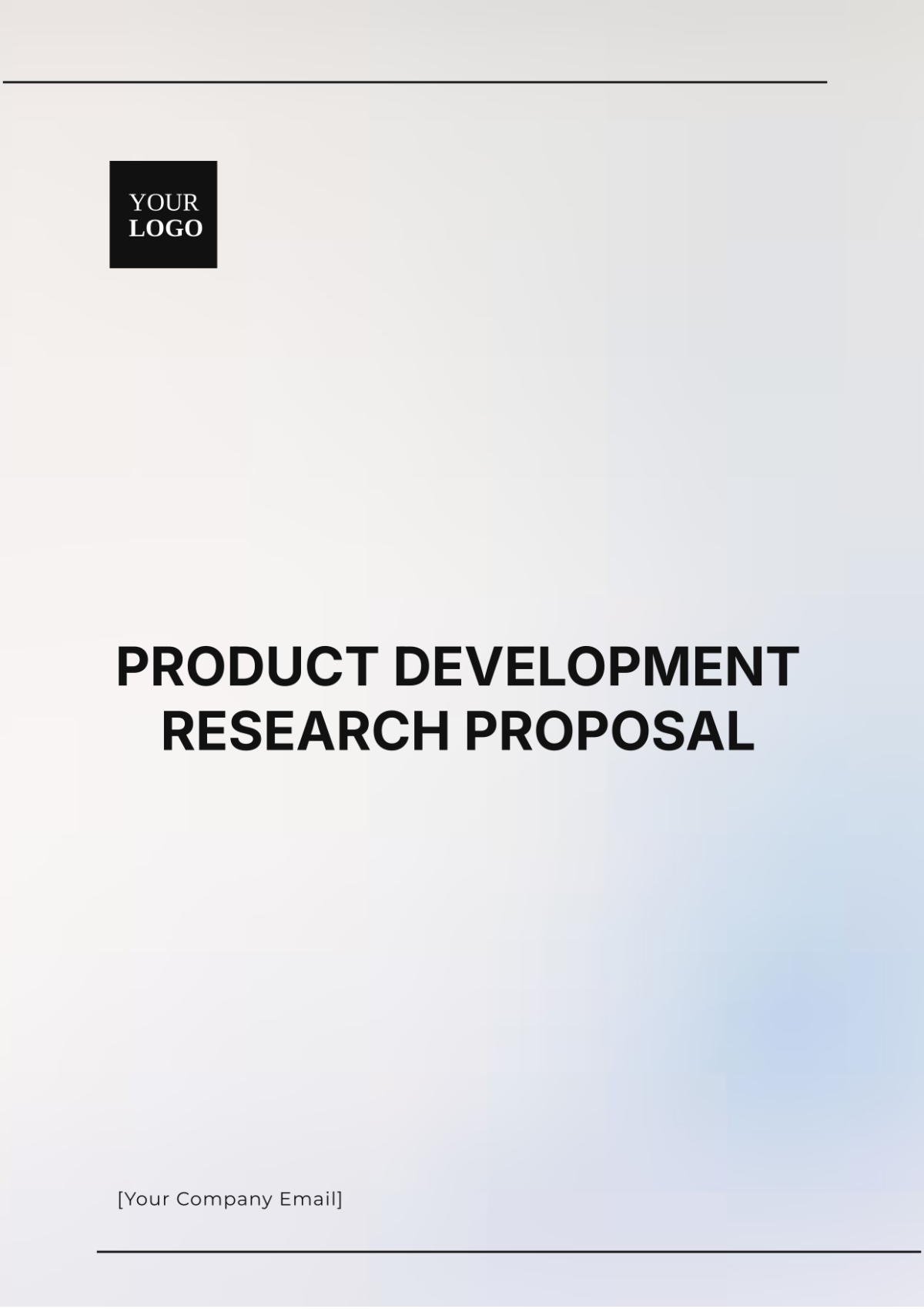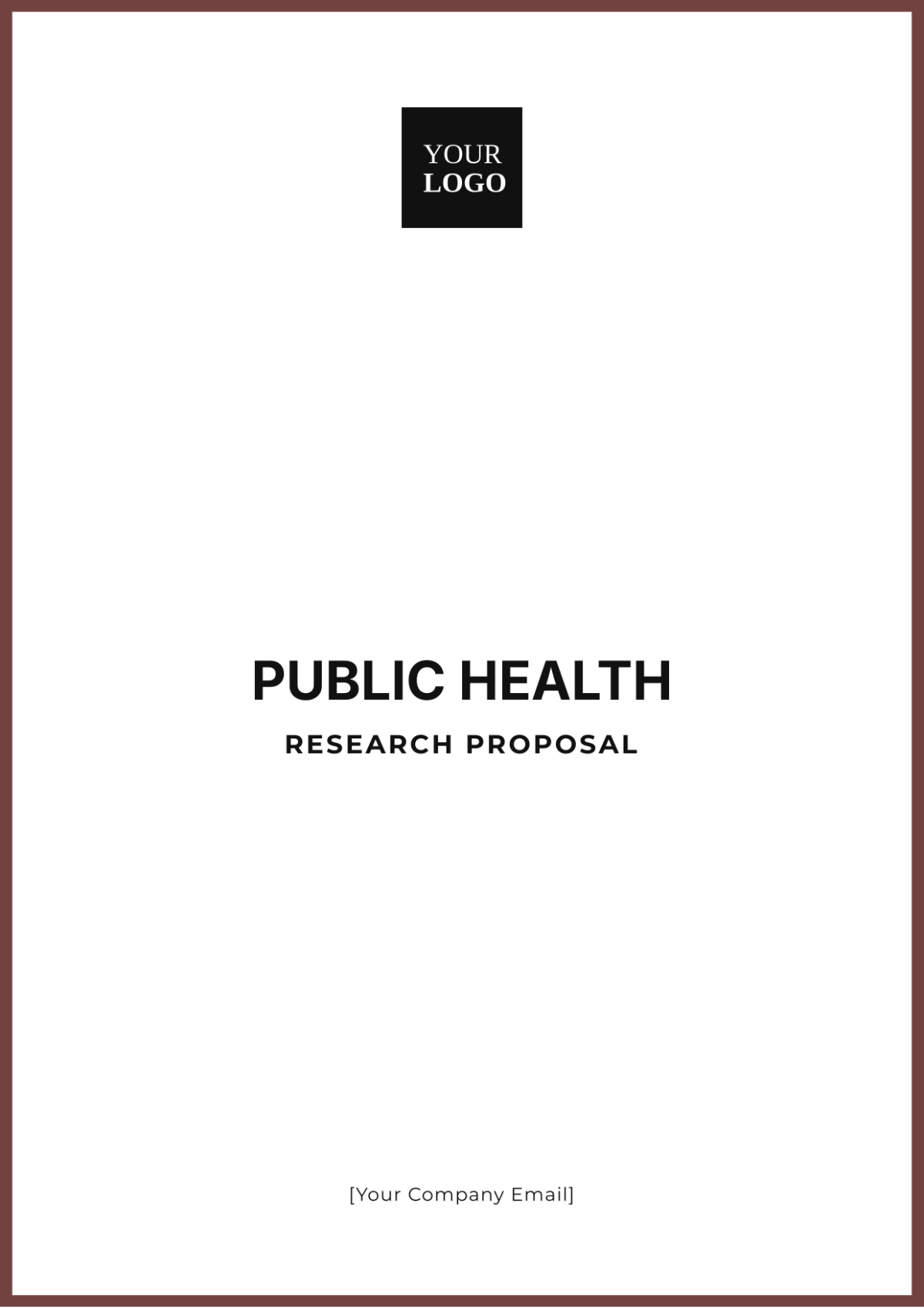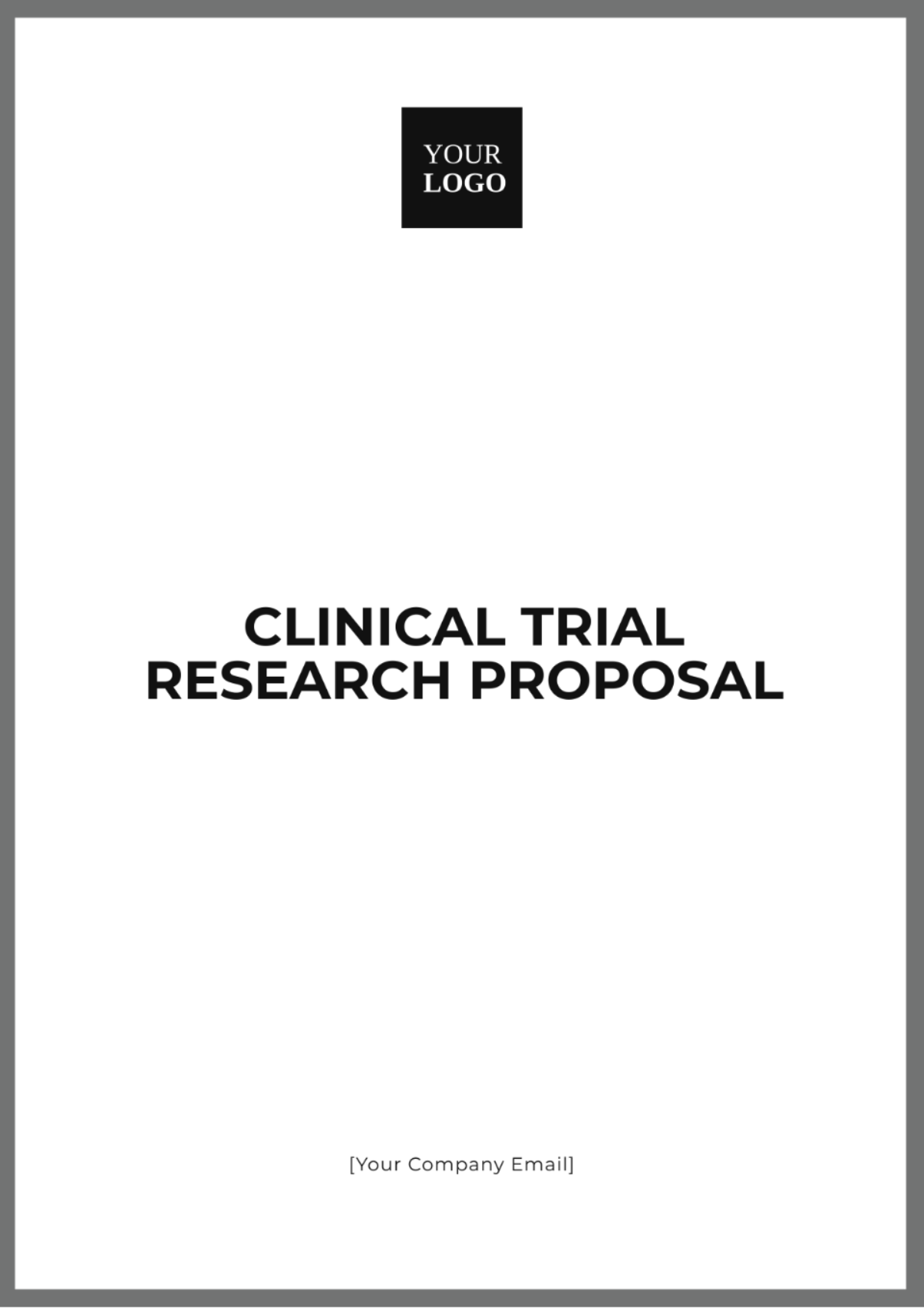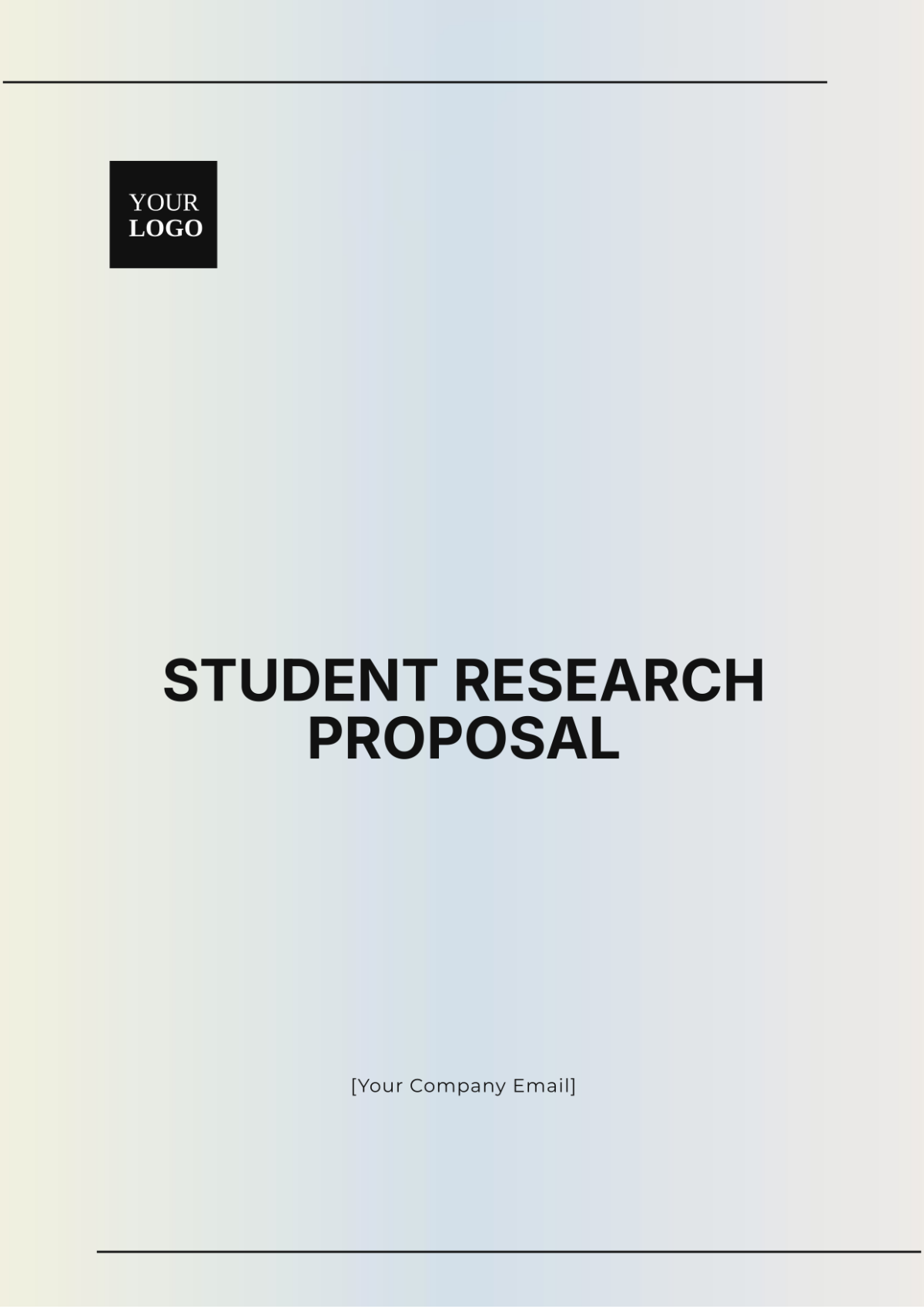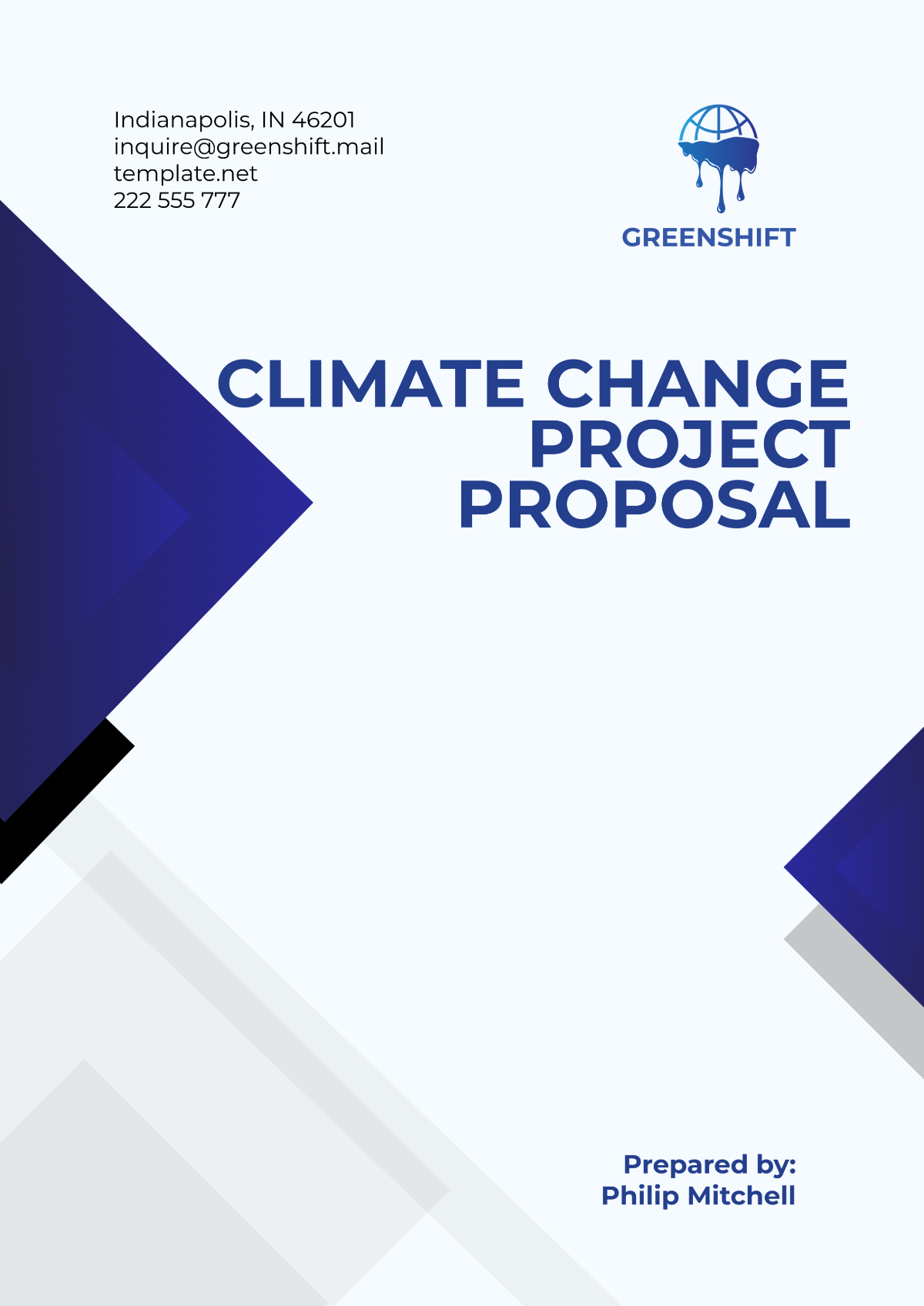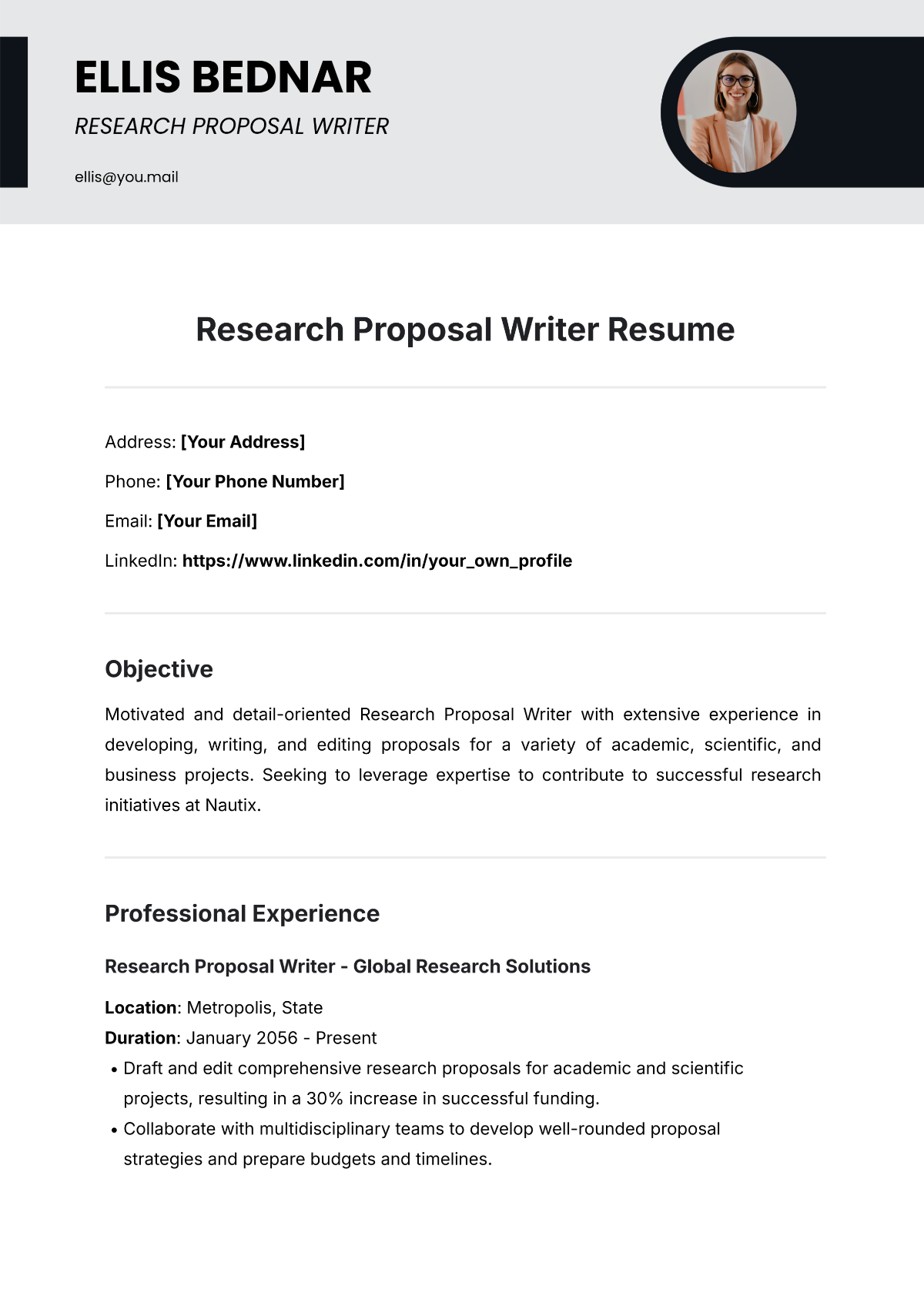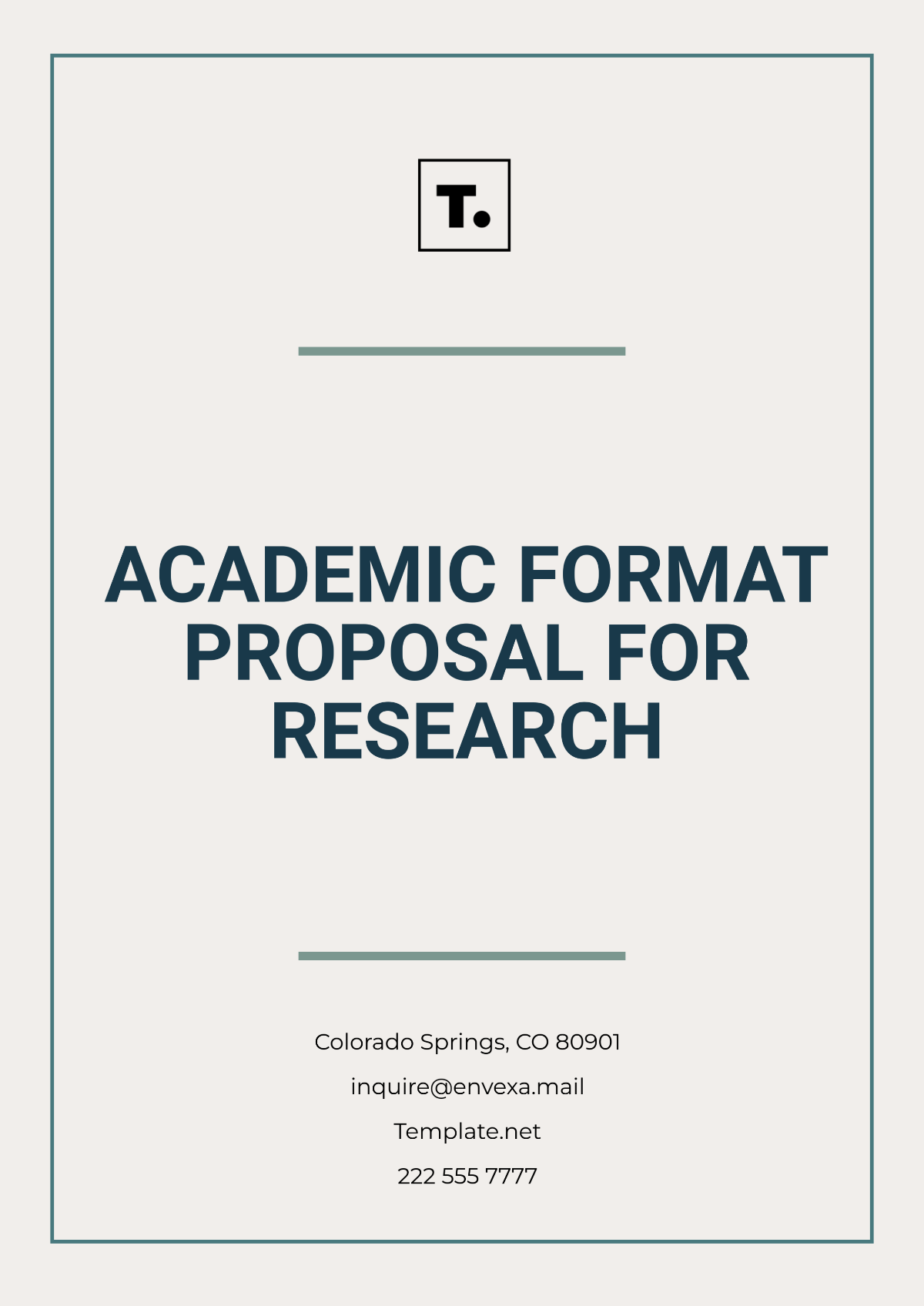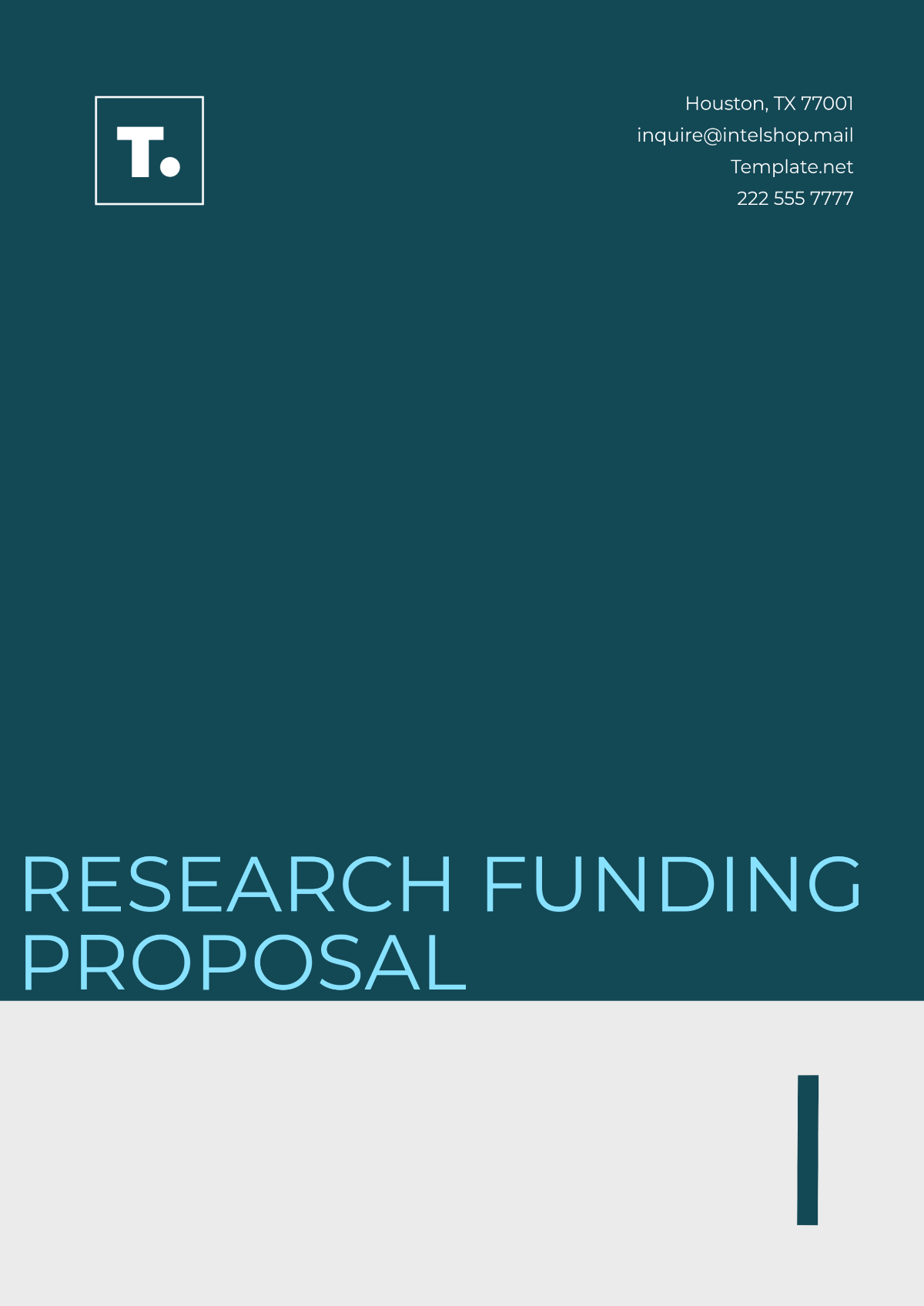AI and Machine Learning Proposal
Prepared By:
[Your Name]
[Your Company Name]
[Your Email]
1. Introduction
This AI and Machine Learning Proposal outlines the strategy, methods, and expected outcomes for applying artificial intelligence (AI) and machine learning (ML) to improve customer demand forecasting. This proposal aims to provide a clear framework for leveraging AI and ML technologies to optimize inventory management and reduce waste.
Objective
The primary objective of this proposal is to develop an AI and ML-based solution that will enhance the ability to predict customer demand with higher accuracy, enabling more efficient inventory planning and reducing overstock or stockouts.
2. Problem Statement
The current approach to demand forecasting faces challenges in accurately predicting customer demand, which leads to excessive overstock in some product lines and shortages in others. These inefficiencies result in lost sales, increased operational costs, and a negative environmental impact due to excess unsold inventory. Traditional methods, such as basic historical analysis, do not account for more complex factors like seasonality, promotions, or external market influences.
3. Proposed AI and Machine Learning Solution
The proposed solution utilizes AI and ML techniques to address the identified challenges and improve demand forecasting. This will include the following key components:
Component | Description |
|---|---|
Data Collection | Collect historical sales data, product details, weather patterns, and external factors (e.g., market trends, holidays). |
Model Selection | Implement machine learning models such as time series forecasting (e.g., ARIMA, LSTM networks) to predict demand based on historical data and external variables. |
Training and Testing | Train the model using historical data and validate its performance through backtesting and cross-validation techniques. |
Deployment | Deploy the trained model for real-time demand predictions in the production environment. |
Monitoring and Evaluation | Continuously monitor model performance and make adjustments based on real-time data and periodic reviews. |
AI and Machine Learning Techniques to be Used:
Time Series Forecasting (ARIMA): For predicting customer demand based on historical sales data.
Recurrent Neural Networks (RNN) and LSTM: For handling sequences of data over time, capturing long-term dependencies in demand patterns.
Clustering Algorithms (K-means): To segment products into categories based on demand patterns and optimize inventory allocation.
Decision Trees (Random Forest): For feature importance and optimizing the selection of relevant factors like promotions, weather, and economic trends.
4. Deliverables and Timeline
Deliverable | Description | Completion Date |
|---|---|---|
Initial Data Collection | Gather and clean datasets (sales, product attributes, etc.) | January 15, 2050 |
Model Development | Develop and test AI/ML models using historical data | March 10, 2050 |
Prototype Deployment | Deploy model for stakeholder testing | May 5, 2050 |
Final Deployment | Full model implementation and system integration | June 30, 2050 |
Performance Monitoring | Ongoing model monitoring and optimization | Ongoing |
5. Resource Requirements
Technical Resources:
Data: Access to historical sales data, product information, and external factors like weather and market trends.
Computational Power: Cloud-based infrastructure or high-performance computing systems for training large models.
Software Tools: AI/ML platforms such as TensorFlow, PyTorch, and cloud services like AWS, Google Cloud, or Azure for processing and storage.
Human Resources:
Data Scientists: For model development, data preprocessing, and performance evaluation.
Machine Learning Engineers: For deployment and system integration.
Business Analysts: To define business requirements and KPIs for success.
Project Manager: To oversee the entire project from data collection to deployment and monitoring.
6. Budget Estimate
Item | Estimated Cost |
|---|---|
Data Collection & Processing | $60,000 |
Model Development | $95,000 |
Software and Tools | $40,000 |
Computational Resources | $25,000 |
Monitoring & Maintenance | $20,000 |
Total | $240,000 |
7. Benefits of the Proposed Solution
Increased Accuracy: AI/ML models will provide more accurate demand forecasts compared to traditional methods, leading to better decision-making.
Cost Reduction: Improved demand forecasting will reduce overstock and stockouts, cutting inventory holding costs and lost sales.
Operational Efficiency: Automated demand predictions will streamline inventory management processes, allowing for more efficient procurement and distribution.
Environmental Impact: By reducing overstock, the company will minimize waste, leading to a lower environmental footprint.
8. Risks and Mitigation
Risk | Mitigation Strategy |
|---|---|
Data Privacy Concerns | Ensure compliance with data privacy regulations (e.g., GDPR) and secure data handling procedures. |
Model Accuracy | Regularly test and refine models to improve accuracy and account for any market shifts or data changes. |
Integration Challenges | Collaborate with IT teams to ensure smooth integration with existing inventory management systems. |
Resource Constraints | Ensure adequate funding and personnel are allocated to meet project deadlines. |
9. Conclusion
The implementation of AI and machine learning can significantly enhance the ability to predict customer demand accurately, leading to better inventory management, reduced costs, and improved operational efficiency. By leveraging advanced AI/ML techniques, this proposal aims to provide a scalable and effective solution to address current demand forecasting challenges.
We look forward to the opportunity to collaborate and move forward with this project.
